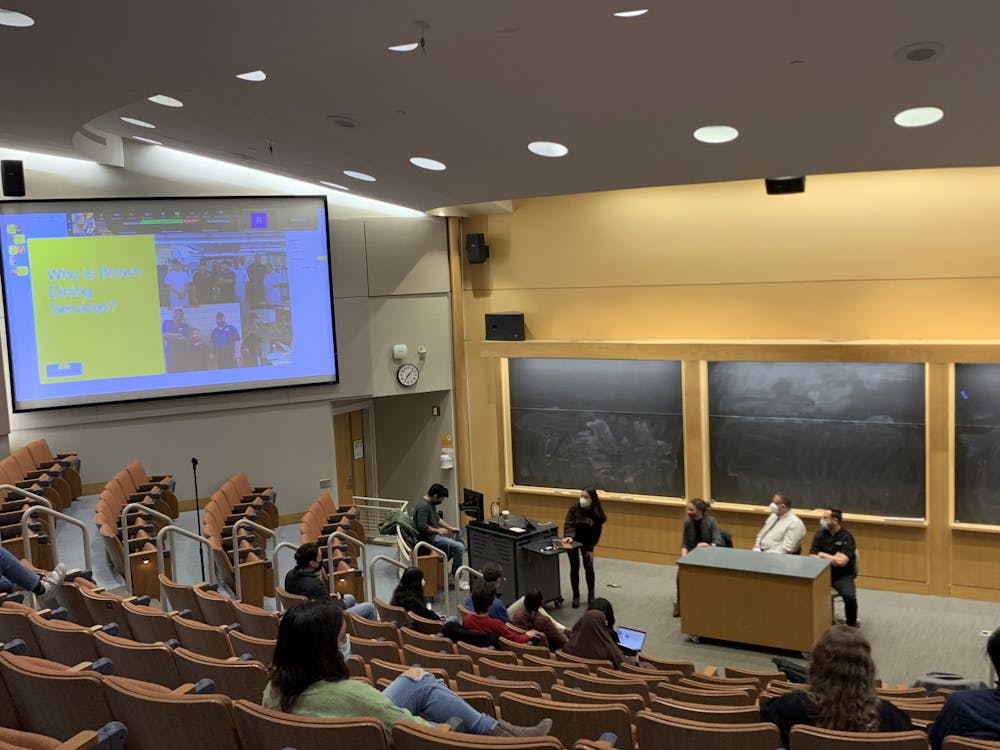Vice President of Dining Programs George Barboza responded to questions from undergraduate students about staffing, food options and health and safety conditions within dining halls at the Undergraduate Council of Students’ general body meeting Wednesday evening. Director of Wellness and Nutrition Jessie Curran and Director of Retail Dining Robert Noyes were also present to answer questions.
The forum came after student activists organized a sit-in outside of Friedman Hall to protest the poor working conditions, understaffing and broken equipment described in an Oct. 3 article in The Herald.
As with all UCS meetings, the event was open to the public. But, unlike at prior town halls, attendees' bags were searched before they were able to enter the event.
Many student questions, which were submitted online before and during the event, centered around reports of understaffing from dining hall workers cited in the Oct. 3 article.
One question asked Barboza — who previously told The Herald that staffing shortages were due to a lack of “qualified applicants” — if increasing wages could incentivize more workers to apply.
“I want to be very transparent and clear right now,” Barboza said. “There may be some questions I’m not able to answer because we are actively in negotiations with the bargaining unit and (wages are) a key issue at the table.”
“I’m not a member of the negotiating team for the University, but I will say that Brown does offer very competitive wages and a great benefits package,” he added.
Another question asked about “efforts to compensate employees for extra work,” given claims by dining hall workers that some are doing the work of “two or three” employees.
“I don’t think that’s true,” Barboza said. “It’s just physically impossible to do the work of two to three people.”
“We’ve reallocated workers when we’ve needed to,” he continued. “That’s what we do as a team.”
One way that the Dining Services team alleviated the burden on workers was switching to disposable silverware earlier in the semester to “lighten the load,” Noyes said.
This week marks the first week that reusable silverware has been available at the Verney-Woolley Dining Hall, according to Barboza. Traditional silverware has been available at the Sharpe Refectory for the past three weeks.
“We made some great strides in the last month with hiring and onboarding new members, so we were able to go back to” using silverware Barboza said.
Barboza also shared that staff are able to express concerns about their work to him directly or at monthly labor management meetings, which are attended by representatives from different sectors of Dining Services.
One question asked Barboza about the measures being taken regarding the sanitation concerns raised by workers who spoke to The Herald, specifically dishes left out and floors remaining unswept.
“That was taken out of context and out of proportion. That is simply not true,” Barboza said. “We have an outside, unbiased vendor who comes in and inspects our units … every month there are a couple of minor points that are pulled up that we immediately correct.”
“There was one day when one or two food service workers didn’t show up … and some pans and dishes piled up,” Barboza continued. But “that was completely blown out of proportion.”
Multiple workers previously showed The Herald photos of dishes, pots and pans towering high, left to be cleaned the next morning as understaffing in the dish room left workers stretched thin.
Another question asked the Dining Services representatives about plans to address broken and old equipment.
“Some of (our) equipment is 20 to 25 years old. We recognize that,” Barboza said. Dining Services planned to upgrade this equipment, but “what we did not anticipate was the broken supply chain” around the country.
But now, “all of the equipment is in” and just needs to be installed, Barboza said.
Another series of questions centered around student experiences with meal plan options, including where swipes can be used and overall meal plan pricing.
In response to questions about why different tier meal plan costs are not proportional to the quantity of swipes they provide, Barboza shared that part of what goes into meal plan fees are fixed costs that are outside of the food.
Barboza also shared that meal swipes are no longer accepted at eateries such as the Blue Room because there would be “too much foot traffic” for the space. Meal swipes are also meant to be reserved for dining halls that serve full meals, rather than grab-and-go style items, Noyes added.
Another question submitted summarized many of the topics discussed at the town hall: “Are you able to say with certainty that Brown is delivering high-quality food in a safe and healthy working environment that is worth the amount of money students pay?”
“Absolutely,” Barboza said. “Absolutely, without a doubt.”





